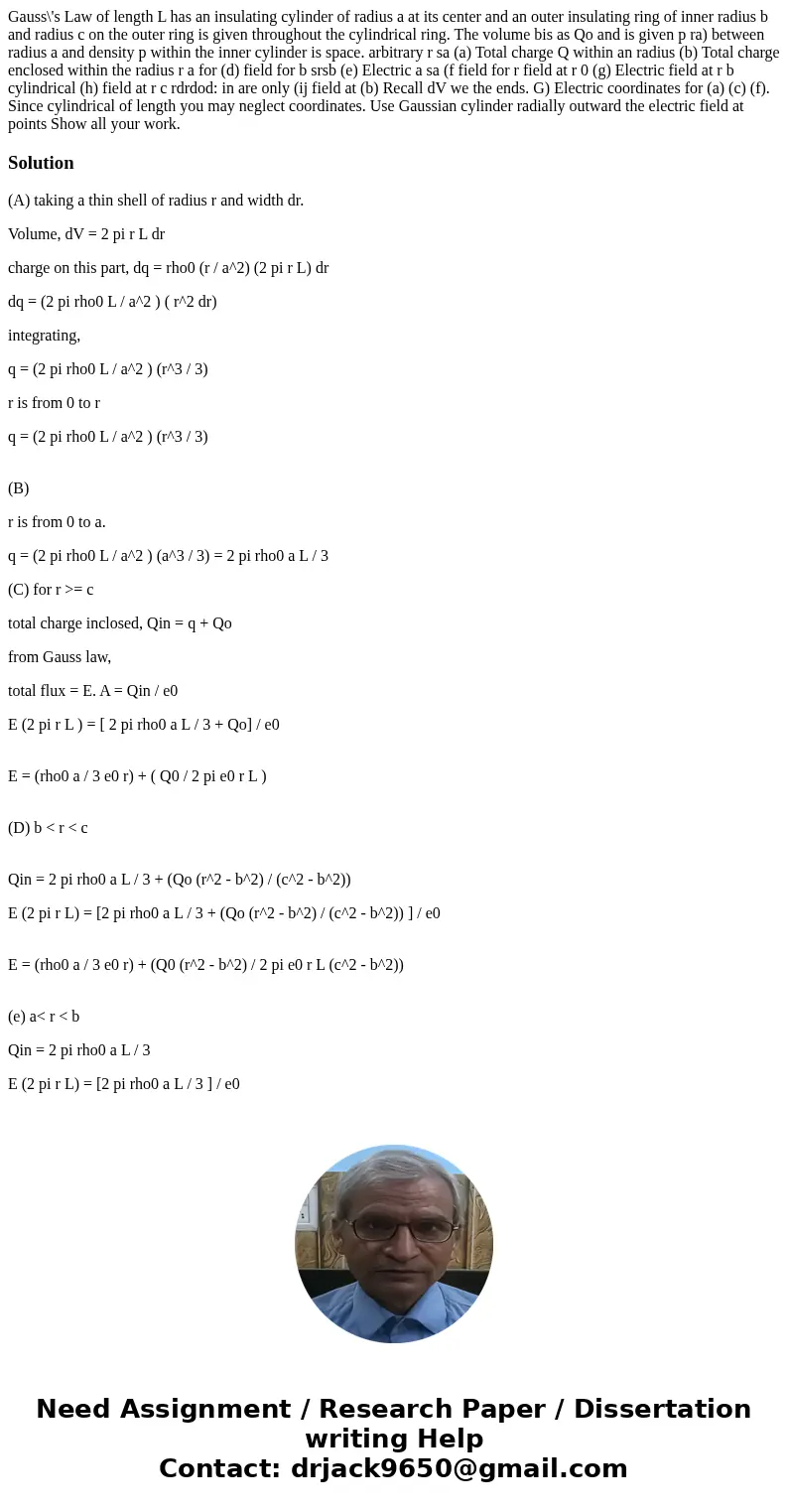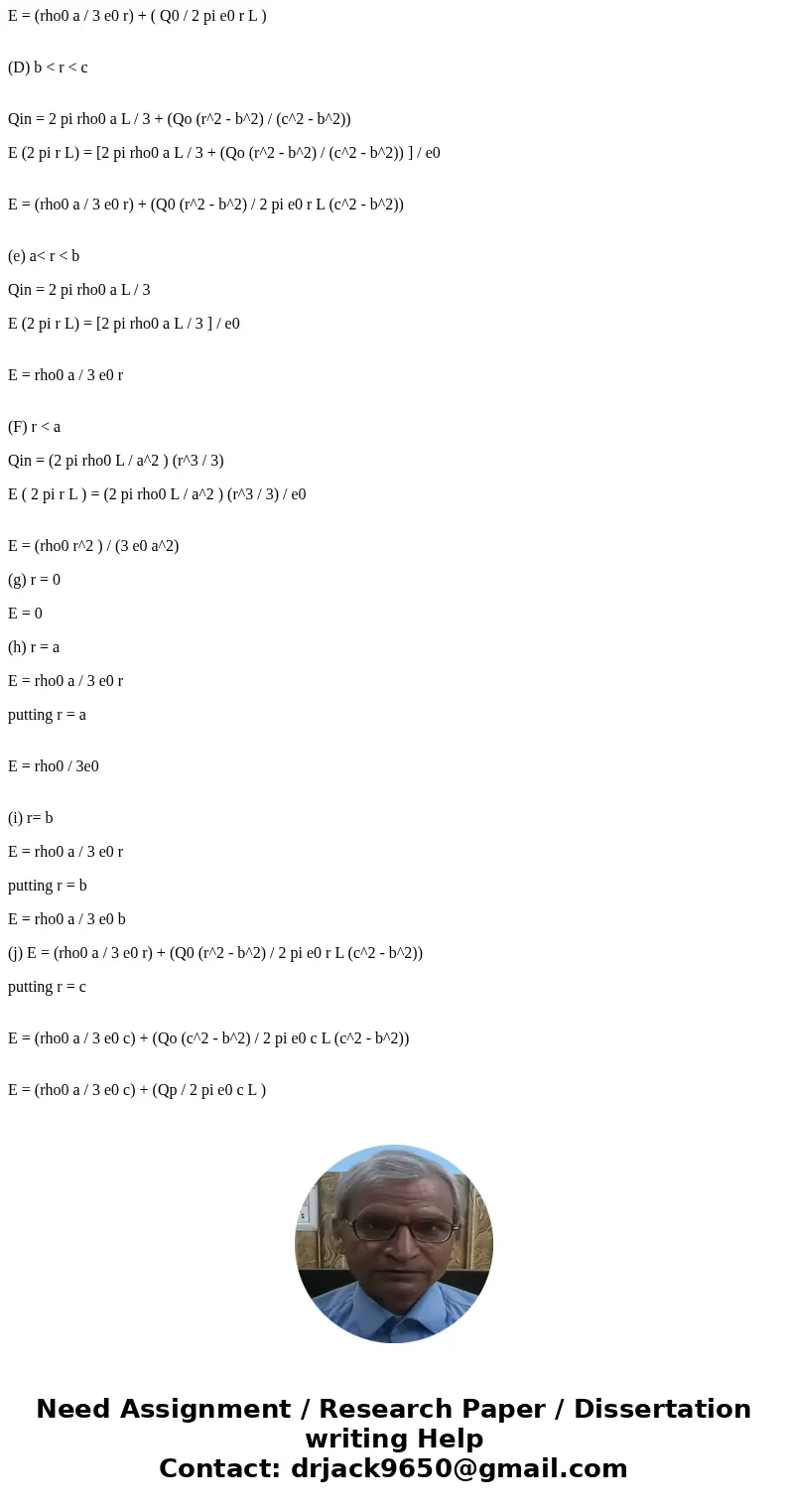Gausss Law of length L has an insulating cylinder of radius
Solution
(A) taking a thin shell of radius r and width dr.
Volume, dV = 2 pi r L dr
charge on this part, dq = rho0 (r / a^2) (2 pi r L) dr
dq = (2 pi rho0 L / a^2 ) ( r^2 dr)
integrating,
q = (2 pi rho0 L / a^2 ) (r^3 / 3)
r is from 0 to r
q = (2 pi rho0 L / a^2 ) (r^3 / 3)
(B)
r is from 0 to a.
q = (2 pi rho0 L / a^2 ) (a^3 / 3) = 2 pi rho0 a L / 3
(C) for r >= c
total charge inclosed, Qin = q + Qo
from Gauss law,
total flux = E. A = Qin / e0
E (2 pi r L ) = [ 2 pi rho0 a L / 3 + Qo] / e0
E = (rho0 a / 3 e0 r) + ( Q0 / 2 pi e0 r L )
(D) b < r < c
Qin = 2 pi rho0 a L / 3 + (Qo (r^2 - b^2) / (c^2 - b^2))
E (2 pi r L) = [2 pi rho0 a L / 3 + (Qo (r^2 - b^2) / (c^2 - b^2)) ] / e0
E = (rho0 a / 3 e0 r) + (Q0 (r^2 - b^2) / 2 pi e0 r L (c^2 - b^2))
(e) a< r < b
Qin = 2 pi rho0 a L / 3
E (2 pi r L) = [2 pi rho0 a L / 3 ] / e0
E = rho0 a / 3 e0 r
(F) r < a
Qin = (2 pi rho0 L / a^2 ) (r^3 / 3)
E ( 2 pi r L ) = (2 pi rho0 L / a^2 ) (r^3 / 3) / e0
E = (rho0 r^2 ) / (3 e0 a^2)
(g) r = 0
E = 0
(h) r = a
E = rho0 a / 3 e0 r
putting r = a
E = rho0 / 3e0
(i) r= b
E = rho0 a / 3 e0 r
putting r = b
E = rho0 a / 3 e0 b
(j) E = (rho0 a / 3 e0 r) + (Q0 (r^2 - b^2) / 2 pi e0 r L (c^2 - b^2))
putting r = c
E = (rho0 a / 3 e0 c) + (Qo (c^2 - b^2) / 2 pi e0 c L (c^2 - b^2))
E = (rho0 a / 3 e0 c) + (Qp / 2 pi e0 c L )


 Homework Sourse
Homework Sourse